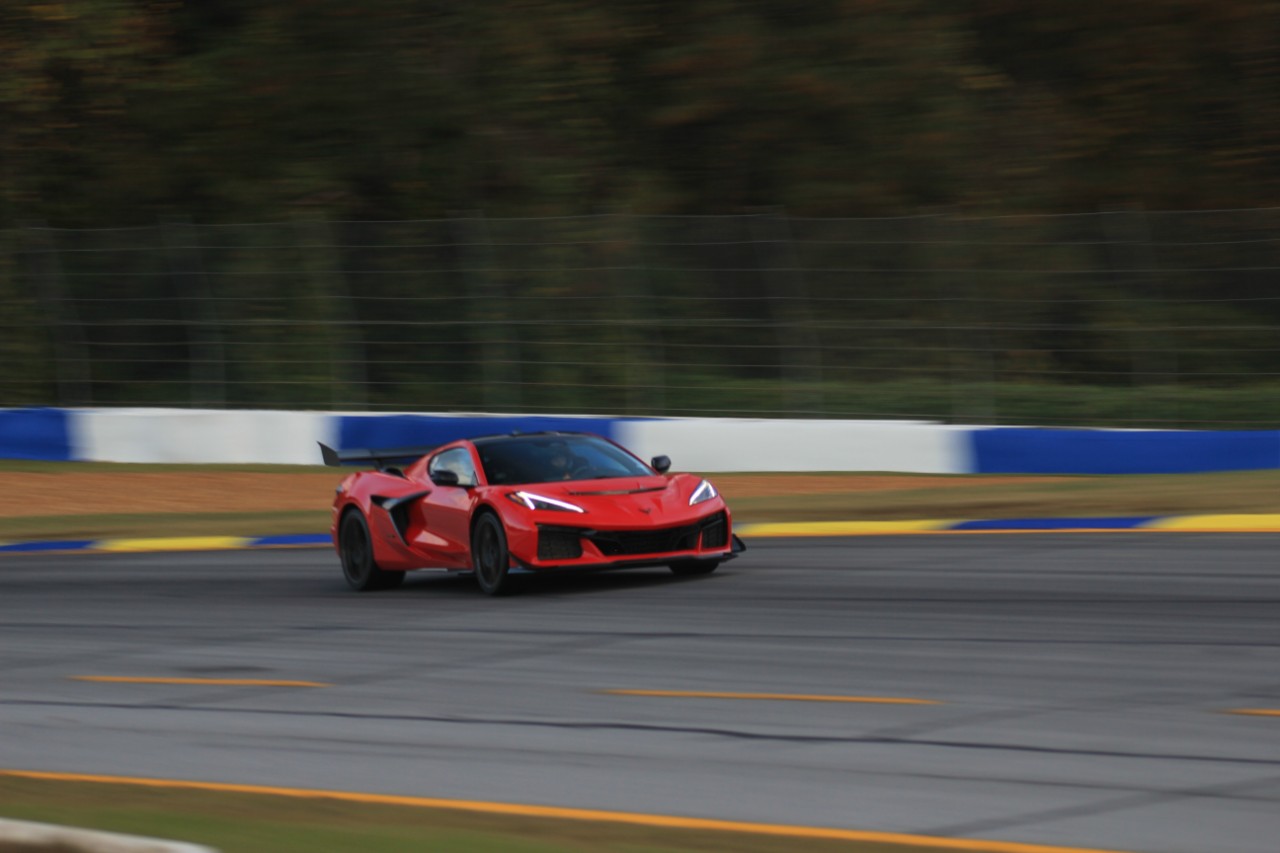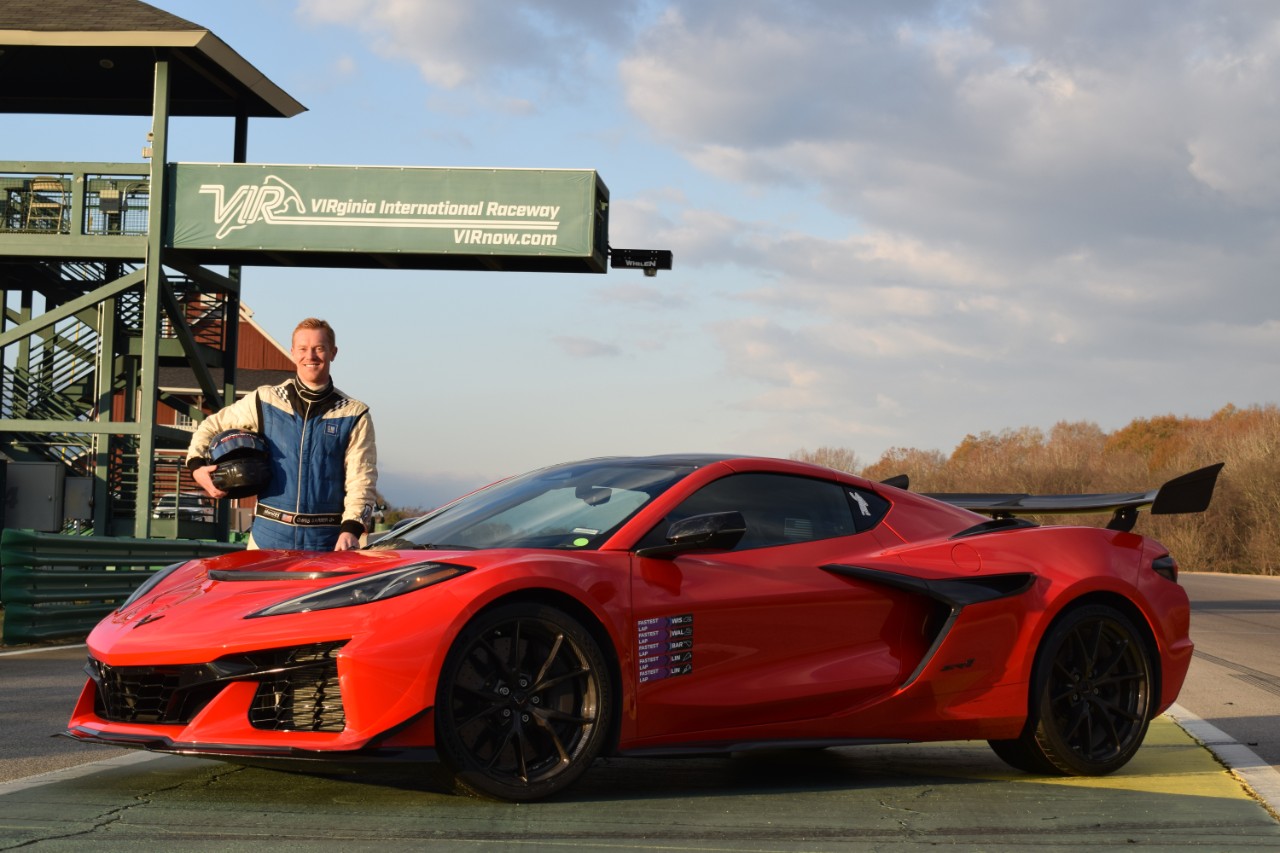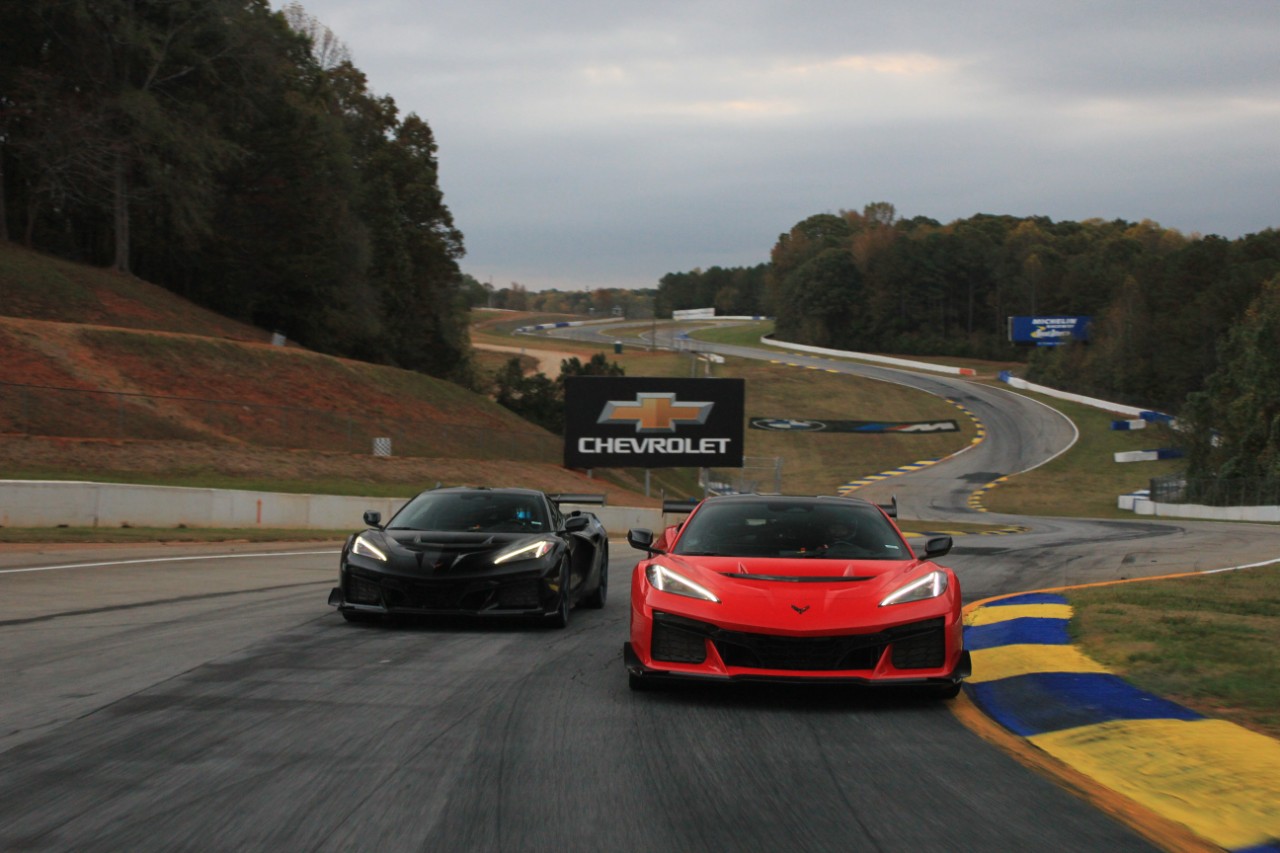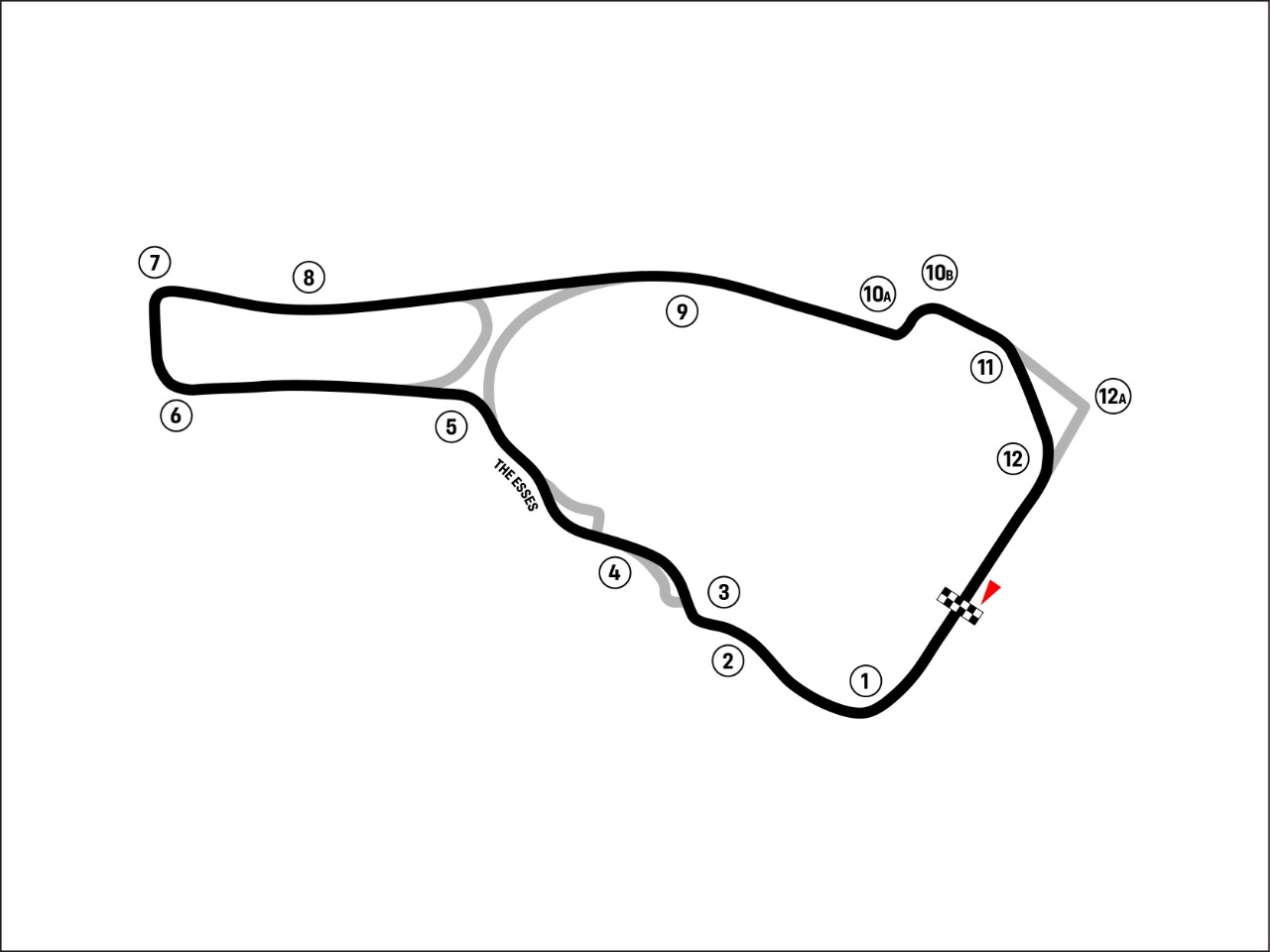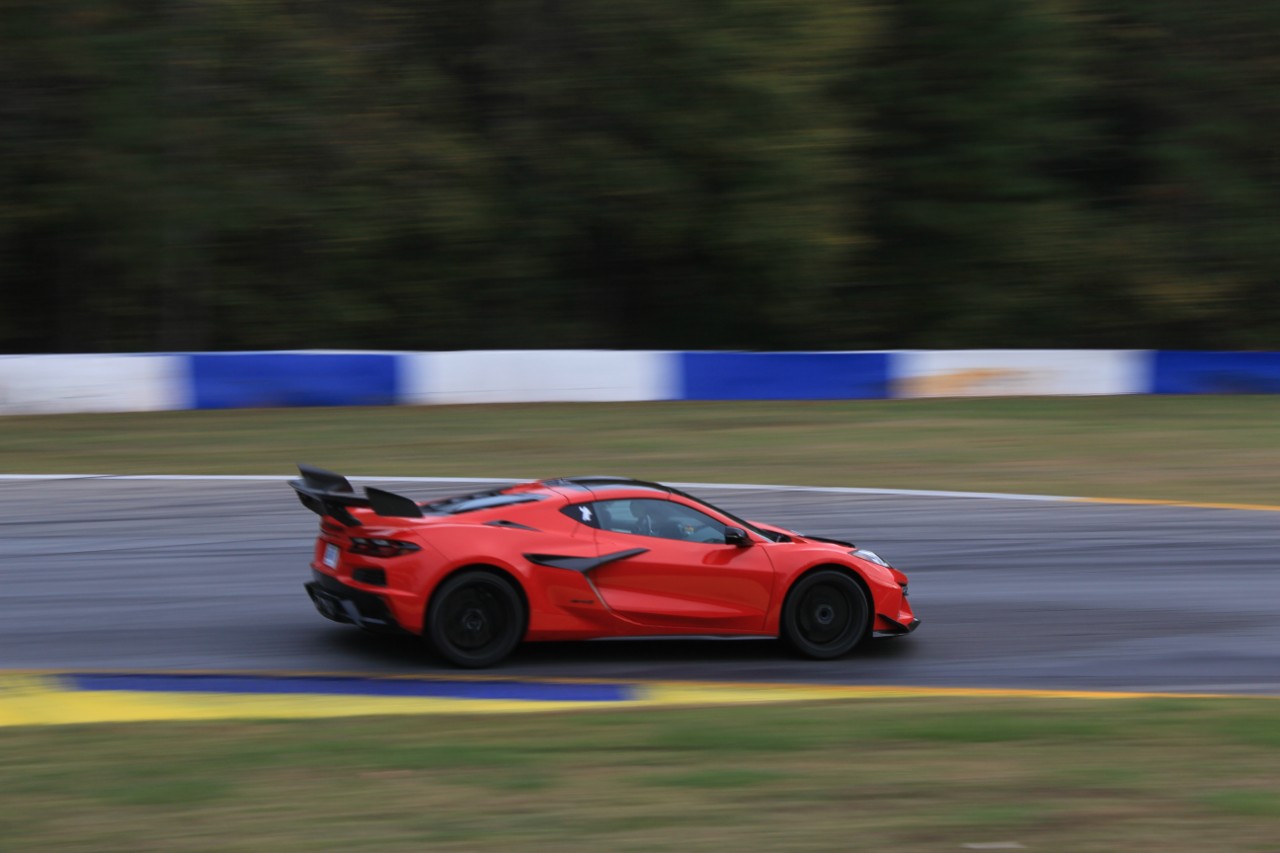“At Road Atlanta, there are two very, very high-speed, high-commitment corners – Turn 1 and Turn 12,” Barber says. “The run toward Turn 1 is a somewhat short straightaway, but in the ZR1 you’re coming onto the straight at like 125 miles per hour. You brush the brakes and turn into Turn 1 and the car kind of slides its way in. Then the track starts to go uphill and picks up camber. You kind of scare the crap out of yourself, throwing the car in and hoping it’s going to catch when you hit that hill on the camber, which is the fast way to get through it. You’ve got to really send it in and just wait for that track profile to save you. It takes a lot of commitment. It’s really easy to lose a lot of time by going a little too slow into Turn 1.”
Turns 3, 4 and 5 make up “The Esses,” a serpentine right-left-right wiggle that tumbles down one hill and bounds up the next. It’s meant to be taken flat-out, no brakes. A short straightaway sends cars piling into the tight, slow, back-to-back Turns 6 and 7.
“You come off a pretty tight Turn 7 and then you have this really, really long straightaway,” Barber says. “The ZR1 just murders that straightaway. It’s so much fun to just fly down that thing. It’s doing well over 180 miles per hour at the end of that straight.”
Hard on the brakes into the tightly clenched left-right combo of Turn 10, followed by a sweeping right-hand Turn 11, and then comes the most challenging curve.
“Turn 12 is famous. You’re going up a hill pretty much blind. Then you come down the hill looking at a wall and the giant spectator building right in front of you. You have to stay in the throttle and commit to this really high-speed right-hand corner with maybe 10 feet of grass between you and the wall. It’s really, really intimidating as a driver to look at that and stay in the throttle when you’re going well over a hundred miles an hour coming out of 12. It’s just a very intimidating track.”
Intimidating, but in the ZR1, “it’s a super fun track because the car is just so capable,” Barber says. “Its strength is power. We’ve got awesome grip and handling and aerodynamics, but power is where the car really shines. That long straightaway is one place where the new ZR1 just walks away from the competition. With the mid-engine layout, we can get on power quicker than a lot of cars. This new ZR1 just screams out of the corners. Once you hit fourth gear, most cars taper off, but this car just keeps going.”
Horsepower alone can’t set a lap record, of course. “The stopping power of the car is just so immense,” Barber says. “And having the ZTK package with the big downforce was another big enabler. You can actually use that power, not just in the straightaway, but in those high-speed corners as well. That’s where a lot of that lap time comes from – big power on the straightaways and then maintaining it through those corners.”
